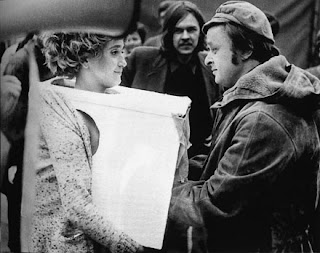Verity Barrett, 2nd Year BA Drawing
Contextual Statement-
In my work I am investigating personal obsessions with my appearance and also the human form in a broader context. Stemming from a history of battles with my own body, I am keenly interested in the psychological and emotional relationships people have with their bodies. I produce work that transforms and distorts the figure-this relates to a distorted body image.
Using elasticated fabrics and sheet latex, stretched over frames, I have created screens which I can press myself into. The screens create a uniform surface that I can observe body shapes through. A sense of anonymity is quite important to me, this stems from feelings of embarrassment and dislikes about parts of my body. Hidden behind a thin membrane, my body becomes an object, a series of undulations and loses the person to whom it belongs. I am only a presence, a form.
I consider my 'body landscapes' to be tonal drawing, but due to their ephemeral nature they can only permanently exist as documentation (photographs and videos). Live, the work appears performative and is too straightforward. I do not want the viewer to take a literal reading of the situation-seeing simply a person moving behind a screen. By recording the 'performance' I can regain control of what the viewer sees through editing and by carefully chosen titles. To an extent I am then able to direct the viewer's interpretation of the work.
In the lecture 'Reading Drawings' Professor Stephen Farthing talked about drawings evidencing their own making, in an almost forensic manner. Drawing from life means that this kind of 'reading' is possible. However, when I draw from the photographs of my body behind a screen, I am distancing the drawings from their making. Just as I want my identity to be 'removed' from the work. My body, the subject, is behind a physical covering-once removed. Then through a camera an image is captured-twice removed. You have to re-draw a drawing to figure it out.
I have also been experimenting with ways of distancing myself from my mark making tools, to completely relinquish control. So far I have used powders to allow an image to be created by disturbance. I have looked at the surrealist technique of fumage-using candle smoke to make drawing, but it is still important to me that I involve my body in whatever drawing techniques I use. I think using the bodies of other people as a drawing tool akin to Yves Klein, could be my ultimate goal.
My presentation went pretty well, although I was so nervous I needed to wee multiple times and then the projector and laptop had connection problems...














